The house is torn down now. Some papers stapled to a hacked-up stump are the only evidence it ever existed. Before getting ripped to pieces, the double-wide trailer on the edge of Rancho Tehama Reserve was a testament to the nocturnal activities of Kevin Janson Neal. For months, people along the broken hills could hear him in the darkness: Neal working his dog into a frenzy under the dry, cadaverous tree limbs; Neal screaming lewd threats over shredded ribbons of plastic tangled through manzanita and a weathered fence line; Neal firing his Jennings 9mm into the night, shots echoing off a steep wash of oaks that rose like a shadow over his trailer.
Now, on this winter afternoon, there’s only silence. The papers fixed to the stump tremble in the breeze, bending toward a blanched arch of gravel at the road’s end. It was here, not far from the trailer, that Neal first attacked the women. They were his neighbors, 34-year-old Hailey Poland and her boyfriend’s mother, Diane Steele. Court documents indicate Neal had been menacing their family for months. And on January 31, 2017, he finally went after them. Prosecutors outlined the encounter in their charging documents: Neal spotted the women on a walk and fired his Bushmaster rifle near them. Panicked, they saw him bolting over the fence with a 7-inch knife. A three-way fight tore across the gravel. Neal drove his blade into Poland’s abdomen. He snatched Steele’s cellphone as she tried to call for help and punched the 68-year-old woman in the face. Then he threw her to the ground, continuing to beat her.
Neal was arrested and charged with multiple felonies. A Tehama County judge issued a restraining order that barred him from going near the women and their family. That decree made Neal a “restricted” person — it forbade him from possessing firearms. On February 22, Neil’s attorney filed a form promising that his client had surrendered his remaining Jennings 9mm to a gun supplier inside a garage near a lonely airstrip outside Red Bluff.
There may have been a brief pause in the nighttime sounds around Neal’s double-wide, but there were other sounds — different sounds — going on inside the trailer’s living room. They were the noises of a hand-drill biting shavings out of a metal frame, the click of a trigger spring and pop of a slave pin, the quiet scrape of a gas-block sliding over a barrel.
Neal soon had two fully functional AR-15 rifles, and every part he used to build them was unmarked, unregistered and unlicensed. They were “ghost guns.”
A cold wind slaps the papers on the stump. They flap backwards, waving in the direction of the spot where Neal stuffed the body of his slain wife under the trailer’s floorboards. The next morning, November 14, 2017, he took his AR-15 ghost guns, along with two pistols of unknown origin, down a long brushy road spotted with old gates and pickup trucks. In a thunderous instant, four more people lay dead, nine others were being rushed to the hospital with gunshot wounds, and an elementary school stood riddled with the marks of high-velocity bullets. Among the bleeding but breathing survivors were three young children. Among the bodies being driven to the mortuary were two names on Neal’s restraining order.
Graham Barlowe of the Bureau of Alcohol, Tobacco and Firearms arrived at Rancho Tehama in the aftermath of the chaos. The longtime federal agent had come to assist with the investigation. He wasn’t surprised to hear from sheriff’s deputies that it was a ghost gun Neal had pulled out at the elementary school. Barlowe’s team had seen a nightmare like this before. And everyone knows that the next nightmare can be worse.
“It’s a huge problem,” Barlowe says of ghost guns. “No records are kept on them. They’re not regulated in any way. There are no serial numbers when you find them. … In Sacramento, they’re probably the majority of our work now.”
The Ranch
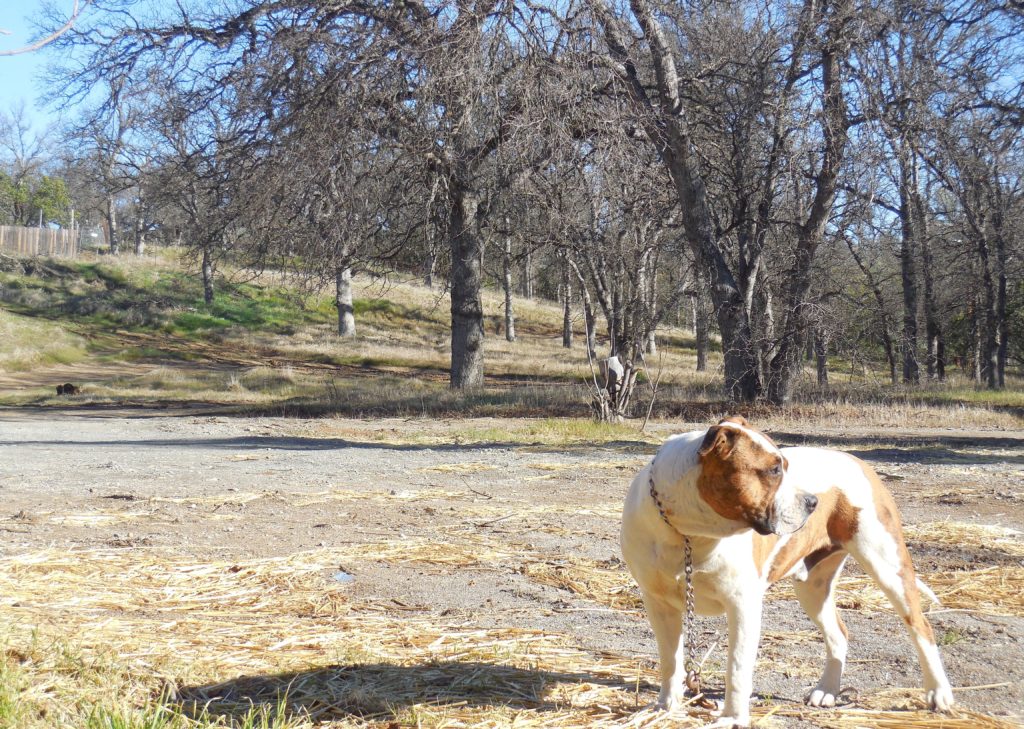
A group of people stand shivering by the door of Rancho Tehama Community Church. Sunlight beams on the rough ridges and wooded bluffs overhead, casting brighter on snow-dusted mountains lifting through a frigid blue sky. The townsfolk huddle in a line under beanies and flannels. A few bent cowboy hats are tipped in the breeze. They’re waiting for the food bank to let the next family in. Chic Sievers, a church elder, carries two bags of groceries out to a woman’s car. To Sievers’ right, Stagecoach Road stretches 700 yards from a faded “Come and Worship” sign to the elementary school where Neal fired a hundred rounds from his ghost gun, its .223-caliber bullets punching through walls to hit a sheltering 6-year-old. Sievers sets the groceries down. To his left is the intersection where Neal opened fire on Tiffany Phommathep’s pickup, striking her five times and sending bullets into her 7- and 10-year-old sons. As Sievers pivots back toward the line, his eyes turn over the section of road where a sheriff’s deputy and a Corning police officer finally confronted Neal, hearing round after round sing into their patrol cars as they tried to drop him.
On that morning four months ago, this pale pillbox church literally stood at the crossroads of terror. “Even our pastor’s truck had bullet holes in it,” Sievers says.
All winter, residents of Rancho Tehama Reserve, which they call “the Ranch,” have tried to move on from the sound of cracking air and desperate screams. But this week is different. This week they’ve had to contemplate the slaughter of 17 students and teachers in Parkland, Fla. The story keeps playing on the news — and in the minds of locals who can still hear Neal’s AR-15.
The Ranch put its flags at half-mast for Parkland’s dead. Some here sense a real connection with the teenage victims. But on the Ranch’s community Facebook page, the debate about the effectiveness of gun laws remains fierce. Plenty on the Ranch have thought about the differences between Neal’s killings and the Parkland horror. Unlike the Florida shooter, Neal didn’t get his long rifles through a dealer. He couldn’t have. Neal was awaiting trial for felony assault, assault with a deadly weapon, taking property by force, possession of an assault rifle and reckless discharge of a firearm. The restraining order in Neal’s case would have flagged him in the database of any licensed retailer.
Yet after all the killing that happened on that November day — Michelle McFayden murdered in front of her husband, Joseph McHugh shot dead out in the open, Danny Elliot executed before he could get to the school where his 7-year-old came under fire — some people on the Ranch think the restraining order wasn’t worth the paper it was issued on. Neal killed two of the five people the restraining order was meant to protect: Elliot, Poland’s boyfriend, and Steele, the middle-aged woman he’d earlier throttled.
None of the evidence for Neal’s pending trial stopped him from getting the AR-15s, and most locals on the Ranch are fully aware of why.
“People know that he just got his gun parts through the mail,” Sievers says, shaking his head.

With a story emerging about how Neal had murdered his wife and hidden her remains under his floor, the detail of his ghost guns found minimal coverage in the media. But for Barlowe, the resident agent in charge of the ATF’s Sacramento field office, it was a critical factor in the carnage that ensued.
“The ATF regulates the sale of firearms, but what we don’t regulate is the sale of firearm parts,” Barlowe explains. “If you Google ’unfinished AR-15 receivers for sale,’ you’re going to get a hundred hits, all from companies that are selling them. … The parts are delivered within two to three days. If I’m going to commit some terrible crime, I can probably have one of these guns within 48 hours of pulling out my credit card.”
Barlowe adds that his team has dealt with ghost guns long enough to know two things: They’re not as hard to assemble as people think, and the ATF’s sophisticated gun-tracing center can’t track their history. That’s significant because, according to him, ghost guns are now one of the largest sources of “crime guns” in the Sacramento region, trumped only by stolen pistols.
Several Rancho Tehama residents who spoke with SN&R expressed concerns about how Neal circumvented his restraining order by building his rifles, though they cautioned not to oversimplify how the tragedy unfolded. Several factors contributed to the killings.
Despite Neal being charged with five violent felonies 10 months before the incident, Tehama County’s bail schedule only set his bail at $160,000; Neal’s family sprung him from jail on bond in just two days.
Then, not long after the judge barred Neal from having guns, the disturbing nighttime noises started around his trailer again. The crack-cadences were the unmistakable sign of Neal firing his ghost guns in the shadows. Alarmed residents began making calls to law enforcement to report that Neal had firearms again. Tehama County Sheriff Dave Hencratt has acknowledged his office received numerous calls about shootings near Neal’s address prior to the killings.
Hencratt has said his deputies could never definitively prove who was pulling the trigger. Many in Rancho Tehama feel they never tried. The Tehama County Sheriff’s Office stopped doing interviews about Neal’s story in December.
Finally, though Neal made two ghost guns, he also had two pistols that were stolen or illegally purchased. In a town like Rancho Tehama, where numerous residents are Second Amendment defenders, and more than a few own AR-15s, the logic goes that Neal could have killed people that morning no matter what.
But how many? His self-assembled AR-15 was his primary weapon at the elementary school. It’s generally considered a far more stable shooting platform than a pistol and much easier to accurately aim under stress. It also had triple the round capacity of a standard handgun. Barlowe calls the AR-15 “a highly effective gun for killing human beings.”
Mr. Helpful and Dr. Death
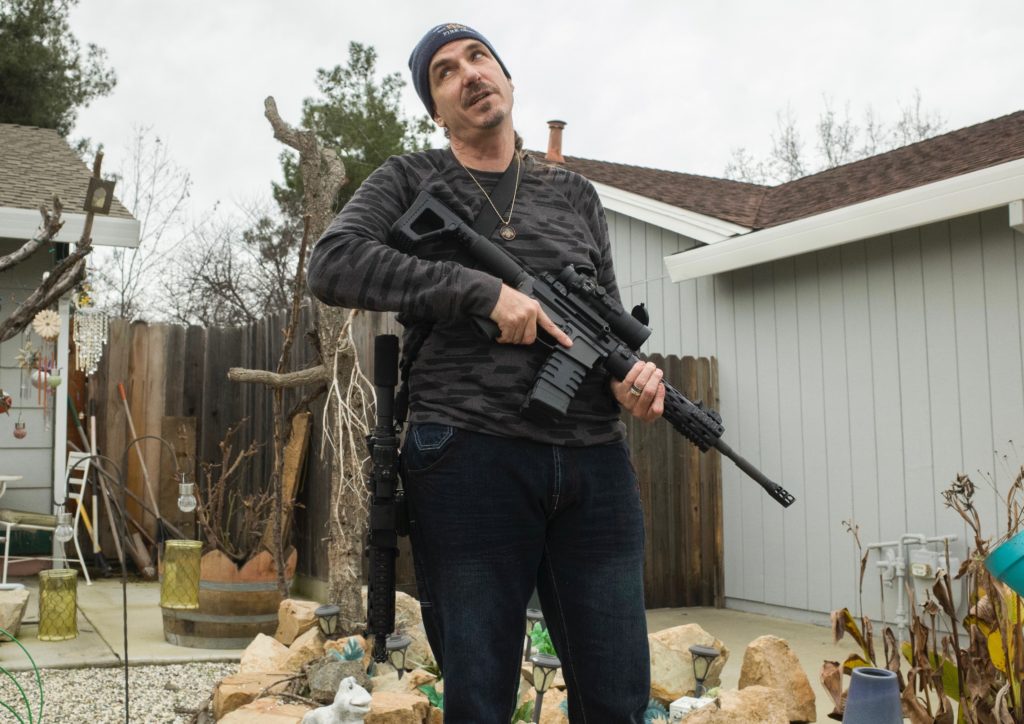
Mike Turner walks by the long, prison-style bars caging a storefront in south Sacramento. The late afternoon light glares on his sunglasses and a red skull centered in a gear silhouette on his T-shirt: The death’s head was a symbol for the gun parts store Turner used to work at behind those guarded windows. When the shop’s owner was sent to federal prison over ghost guns, Turner’s own photograph found its way into an affidavit in the case. He still simmers over how he feels it made him look like a criminal. And on a lawn-dotted cul-de-sac in Antelope, Turner is one gun-builder whose reputation is the opposite.
It started with screams. On the night of October 5, 2017, Turner was watching TV in his house on Sun Maiden Way when a frantic wailing echoed through his windows. Turner paused to listen. A week before, the neighbors to his south had spotted a man in a skeleton mask peering through their window, holding a pistol with a blue laser sight. Though the couple didn’t own a gun, they threatened to shoot the stranger, bluffing him back into the darkness.
Turner knew all about the incident. Now his phone was ringing. “Mike, they’re in our house with a gun!” his neighbor Linda yelled through the receiver. “Help! Help!”
Turner jumped up, grabbed his Sigma 9mm and told his wife to call 911. A second later he was stalking down his driveway in the dark, trying to adjust his eyes to the floodlights. He practically walked into one of the home invaders. The man, later identified by sheriff’s deputies as Marius Oh, was dressed in black and grasping a pistol with a blue laser sight. Turner says he shouted to stop, but the azure beam only slashed up at him. The gunfight was on. Turner drilled a hollow point bullet through the stranger’s hip. The stranger banged a 45. caliber slug right at him. It sailed low, cutting into the ground. Turner started emptying his 10-round magazine with such gusto he stumbled backward, though his volley landed one more hit. At the same instant, the stranger took a shot at Turner’s head. The round whizzed by to detonate the tire of a Ford Ranger up the driveway. Turner could hear his Sigma’s empty chamber clicking as a second intruder darted out of the shadows. A truck suddenly swooped by to grab the men. Turner jacked another clip in as the getaway vehicle tore off for the north county line.
Later, investigating deputies were contacted by a Roseville police officer who’d found Oh bleeding from two gunshot wounds in a Chevron parking lot. An official report by the Sacramento County Sheriff’s Department supports Turner’s version of the shootout. Oh is awaiting trial for assault with a deadly weapon and multiple cases of robbery.
Word about Turner’s actions traveled through his neighborhood. Then, in early January of this year, Turner got another hysterical call, this time from his neighbors on the north side of his home. As the sun was rising, they’d walked into their garage to find a burly biker sleeping in their white sedan. “He’s in my house!” his neighbor Mona stammered. “He’s in my car, in my house!” Turner didn’t wait. He grabbed one of his big, self-built AR-15s. Within seconds, the biker was sitting against a retaining wall with Turner’s rifle holding him at bay. Since the man hadn’t forced his way through a locked door, sheriff’s deputies ultimately declared it a civil matter. Turner’s neighbors, who confirmed the incident to SN&R, said it was “scary” but ended alright “since Mike was there.”
Turner says both calls for help illustrate why gun owners aren’t paranoid to think that they need their high-powered weapons. That includes ghost guns, though Turner doesn’t call them that.
The technical term is “firearms built from unfinished lower receivers.” The receiver is a hand-sized metal casing that a hammer, breechblock, trigger, firing pin and other parts assemble onto. Most lower receivers come with a jig showing exactly where to drill the holes to facilitate attaching the parts needed to turn it into a functional gun. It’s a process hobbyists call “carving out” or “milling out” the gun. After that, attaching the upper receiver, a barrel, a stock and other parts complete the firearm. Turner got hooked on this customizing process at a gun show in Nevada.
“It’s like being a motorhead,” Turner explains. “I can put together a really high-quality gun, and it can be specific. … Making them was always more fun for me than shooting them.”
Now, as Turner paces by the door that once led into LCG AR Parts and Accessories, he glances at the fractured sidewalk where he used to drop signs advertising rifle pieces. The shop had been owned by Luis Garcia, who gave Turner tips on milling out receivers. But the man who taught him the most about building ghost guns was a machinist out of north Sacramento named Dan Crowninshield. Turner says he didn’t know Crowninshield had an alternative persona on internet gun forums. He called himself “Dr. Death.”
According to an affidavit filed by ATF Agent Jerry Donn, on April 3, 2013, an undercover member of his team went into Crowninshield’s machine shop on Striker Avenue. The agent discovered that Dr. Death had a $200,000 drill press that could completely mill out an unfinished lower receiver in 20 minutes. Moreover, the agent said, Crowninshield would engage in this hyper-fast carving for anyone who’d pay him $120. That’s significant, because, according to federal law, if someone instructs another person on how to mill out an unfinished receiver, that’s legal, but if they do any step of the process for another person, or “provide expertise,” for pay, that’s a crime — that’s unlicensed gun manufacturing.
Donn wrote in his warrant that Crowninshield was prepping weapons for strangers without background checks, waiting periods or sales transactions. Dr. Death kept his ghost guns pretty ghostly. There was a reason: Crowninshield had twice been convicted of domestic violence.
“Turns out he’s a prohibited person,” Turner recalls. “He’s not even allowed to touch a gun.”
Turner says he stopped hanging out with Crowninshield in August 2013, after the machinist set him on edge.
“He pulled out [a lower receiver] and showed it to me, and it was an M16 carved out, probably ready to put a full-auto mag in,” Turner remembers. “I didn’t want nothin’ to do with that. I was done with him.”
When the ATF raided Dr. Death’s machine shop, agents searched several other locations, including Luis Garcia’s store and Mike Turner’s house. Luis’ brother, Jimmy Garcia — already convicted of firing a machine gun in Nevada City — was caught having numerous pistols and shotguns. An undercover agent also watched Jimmy mill out a ghost gun and sell it to a convicted felon. Crowninshield and the Garcia brothers were charged with criminal manufacturing of firearms. All three pleaded guilty and went to prison.
Turner was never arrested, though four of his guns — some of the best he ever made, he says — were seized. He says what troubles him more is losing the job at Luis’ gun store, the only job he’s ever loved. These days, Turner admits that the ATF probably had a case on Crowninshield and Jimmy Garcia. He doesn’t believe the same of his former boss, Luis Garcia. Turner’s convinced Luis was different than his brother — that he was a small-business owner who enjoyed helping gun-lovers, including cops, and was just tripped up by a nebulous fog of regulation around making ghost guns.
“The law is so vague,” Turner stresses. “It makes no sense. No one can even understand it.”
Ricochets
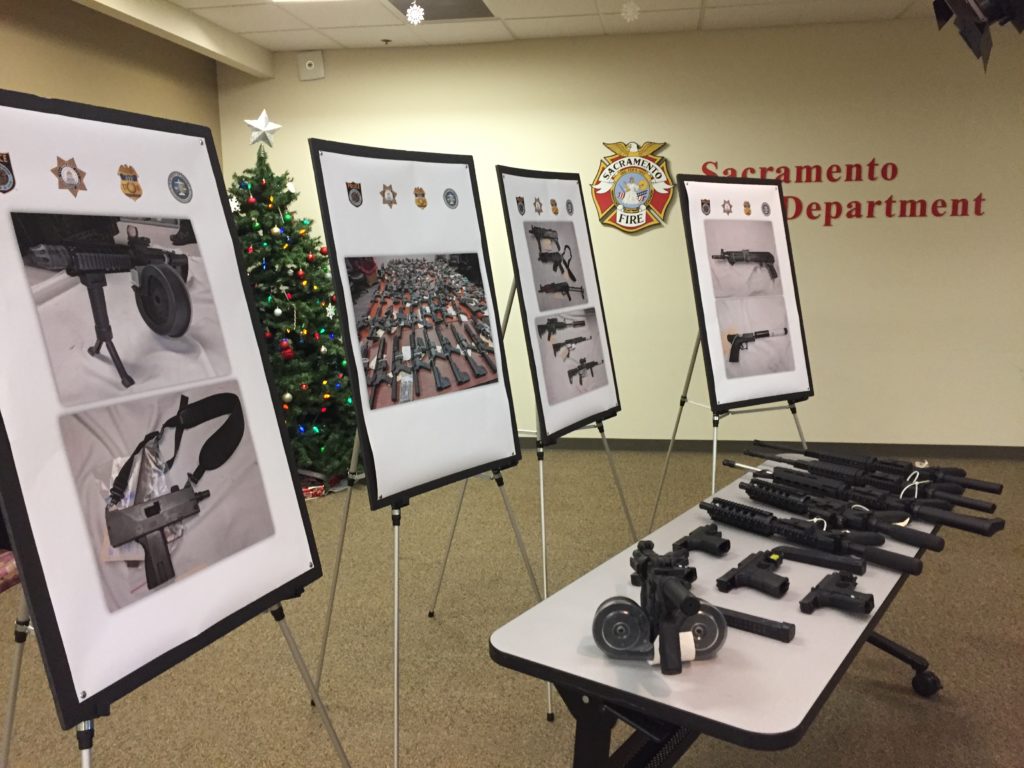
Walking in the winter rain, Rich Hanner pauses on a soundless street in Stockton to look through a chain-link fence. The retired journalist moves his eyes to a chipped and faded sign for Cleveland Elementary School. He’s sure its letters date back to a moment that’s never stopped haunting this avenue — or his own memories on the job.
It was January 17, 1989, and Hanner had been the Stockton Record’s city editor for two months when he got a call from Calixtro Romias, his staff photographer. Romias urged Hanner to empty the newsroom and send every available reporter to a schoolyard in the north city. Hanner’s team was about to discover, in real time, that a violent ex-con and drifter had walked onto the campus with an AK47 assault rifle. His name was Patrick Purdy. He was wearing a flak jacket. A bomb was touching off in his van. Then Purdy did what until that moment had been unthinkable: He started mowing down children as they were running and laughing on the playground.
“I’d covered floods, fires, crimes, but no kind of spot-news experience could prepare someone for this,” Hanner says as he glances to where his photographer captured the small, bleeding bodies. “All you can think about is the tragedy of it, and the horror.”
Purdy murdered five kids and wounded 32 more before terminating himself. The Record’s management eventually made sure Hanner’s reporters had access to professional counseling. “For the people of Stockton, it was traumatizing, shocking,” he recalls.
Hanner now understands his team was witnessing an ominous opening note — the nation’s first high-profile, mass-casualty schoolyard shooting. They’ve since watched its specter return over and over, like a grotesque shadow play that won’t stop flickering up at different spots in the nation. It turned through the American consciousness again last month in Parkland, Fla. But in 1989, the people of California weren’t stupefied by Purdy’s massacre of little children. Before the year ended, lawmakers passed the Roberti-Roos Assault Weapons Control Act, which banned an array of military rifles in the state, including the AK47.
Twenty-five years later, Hanner was still a journalist in San Joaquin County when Stockton experienced the second-darkest day in its history. And if the city’s slaughter of the innocents in 1989 had helped pass the Roberti-Roos Act, three Stockton gang members were about to show how ghost guns could beat it. And they’d do it by turning the streets into an urban war zone.
Misty Holt-Singh was pulling cash out of an ATM on a July afternoon in 2014. Her 12-year-old daughter was a few feet away in the car. Suddenly someone grabbed her. It was one of three gang members. Hoodies over ball caps, dark fake beards, gloves duct-taped to their sleeves. The men pulled Holt-Singh into the bank, leveling guns on the customers and employees. The Police Foundation, a nonprofit research center, later interviewed more than 50 officers and witnesses to understand what happened next. One of the gangsters took hold of the manager, Kelly Huber, by her shirt collar. Huber felt a gun at the back of her head. The men pulled cash from a safe and took bank teller Stephanie Koussaya as a third hostage. They forced the women out into the parking lot. A Stockton police officer was pointing a rifle at them, ordering them to surrender. The robbers kept their guns on the women’s skulls.
In a matter of seconds, the trio was driving wildly through Stockton as they used a self-built AK47, a ghost gun, to overwhelm the responding officers. They still had their three hostages.
And just who were these men? In the front of the Explorer was 30-year-old Gilbert Renteria. In the back, spraying 7.62-mm rounds out the window, was 27-year-old Alex Martinez. According to San Joaquin Superior Court records, both Renteria and Martinez already had felony convictions for dealing meth and street terrorism. The ghost gun had allowed the two men not only to beat the federal Gun Control Act’s rule on felons, but also the Roberti-Roos Act prohibiting AK47s. With his high-capacity combat weapon, Martinez crippled 14 police cruisers during the firefight. He even shot the tires out of a BearCat armored vehicle.
“Bullets tore through cars, shattered windshields, shredded tires, and incapacitated engines,” Police Foundation President Jim Bueermann noted in a review. “Never in the history of U.S. law enforcement has a police force dealt with an incident like this.”
Meanwhile, Holt-Singh’s husband, Paul, got a text from his daughter: “Bank got robbed. They took mom.”
Paul and his daughter would never see Misty alive again. When the smoke cleared, she was found dead from 10 bullet wounds, the result of 19-year-old Jamie Ramos allegedly using her as a human shield.
Later that day, after Renteria and Martinez were zipped into body bags, and Huber and Koussaya were laying in a hospital, two of Barlowe’s ATF agents arrived on the streets of Stockton. It wasn’t the first time the agents had seen a ghost gun used in an exigent shooting event. The year before, Adam Zawahri — prohibited from owning guns due to mental illness — built his own AR-15 and used it for a shooting rampage at Santa Monica City College. He killed five people and wounded four others. The Stockton case was also far from the last time the ATF would see ghost guns in the hands of gang members.
In December 2017, Barlowe and his team partnered with the Sacramento police and county sheriff’s departments to launch a major anti-gang operation that led to 29 arrests and the seizing of 211 illegal firearms. Barlowe says many of those weapons were ghost guns.
“We bought one from a 17-year-old gang member,” Barlowe recalls. “And when that’s happening, you know they’re pretty available.”
In July, a new California law, Assembly Bill 857, goes into effect. It requires anyone who builds a ghost gun to apply to the state for a serial number, which arrives in the mail. It’s on the gun owner to etch it onto the weapon’s receiver. To an amateur gunsmith like Turner, the claim that AB 857 prevents crime is ridiculous for an obvious reason: It works on a voluntary honor system, something gang members and disturbed men aren’t known to follow.
Turner says law-abiding gun owners will comply. Criminals and deranged loners won’t. If anything, the law is further fueling a belief with many gun enthusiasts that announcements around the state capital are about optics instead of reality.
As for Hanner, 30 years of being a journalist has left him with his own lingering questions about lawmakers’ commitment to putting problem-solving over political gain. That’s what has changed, Hanner says, since he was tasked with making sense of the hellish havoc on the yard he’s now staring at.
“Back then, the idea that a madman would walk onto a playground and slaughter children was beyond most peoples’ perception,” he admits. “But the politics weren’t as deeply entrenched as they are now. Back then, they took action.”
With children dashing out to the bars and swings of Cleveland Elementary School, Hanner suddenly notices a tiny cardboard sign, written in sharpie pen, hanging on the worn chain-link. It reads: “No bullying. No violence.”
“I’m kind of surprised that there’s no permanent memorial,” Hanner mutters over the shouts and laughter. “But maybe the kids being out there is memorial enough.”
Scott Thomas Anderson is also the writer-producer of the true crime podcast series ‘Trace of the Devastation’

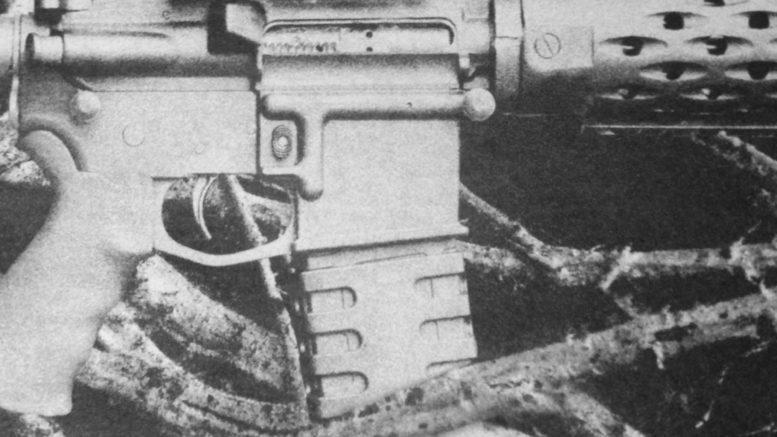

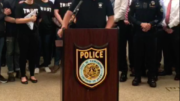


Be the first to comment on "Gripping ghost guns: The death trail of weapons that are untraceable, unrestrictable and so far unstoppable"